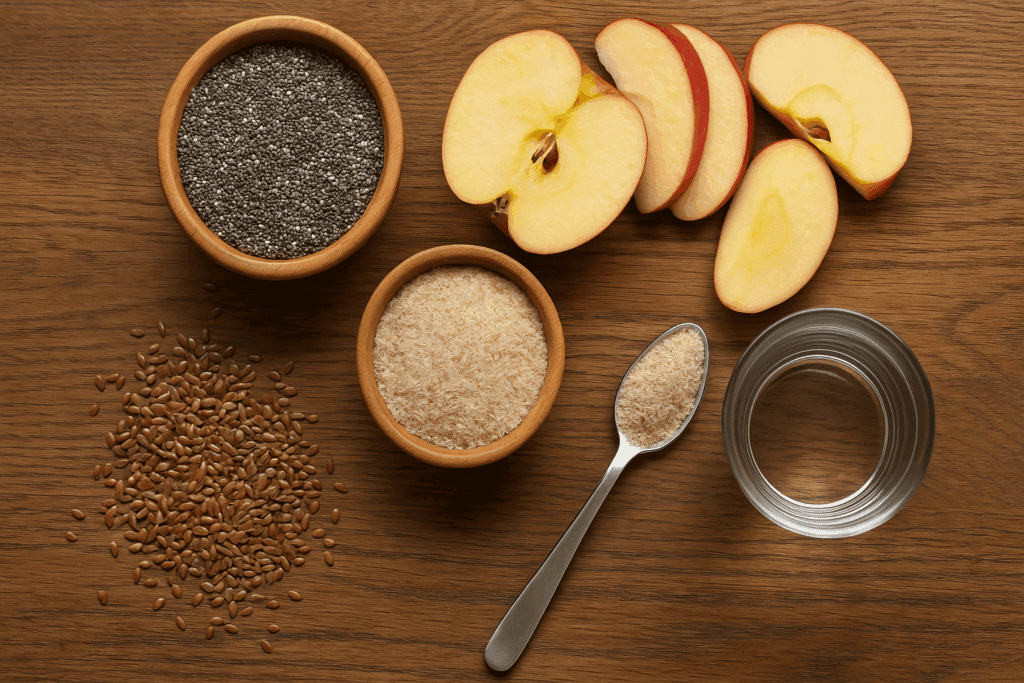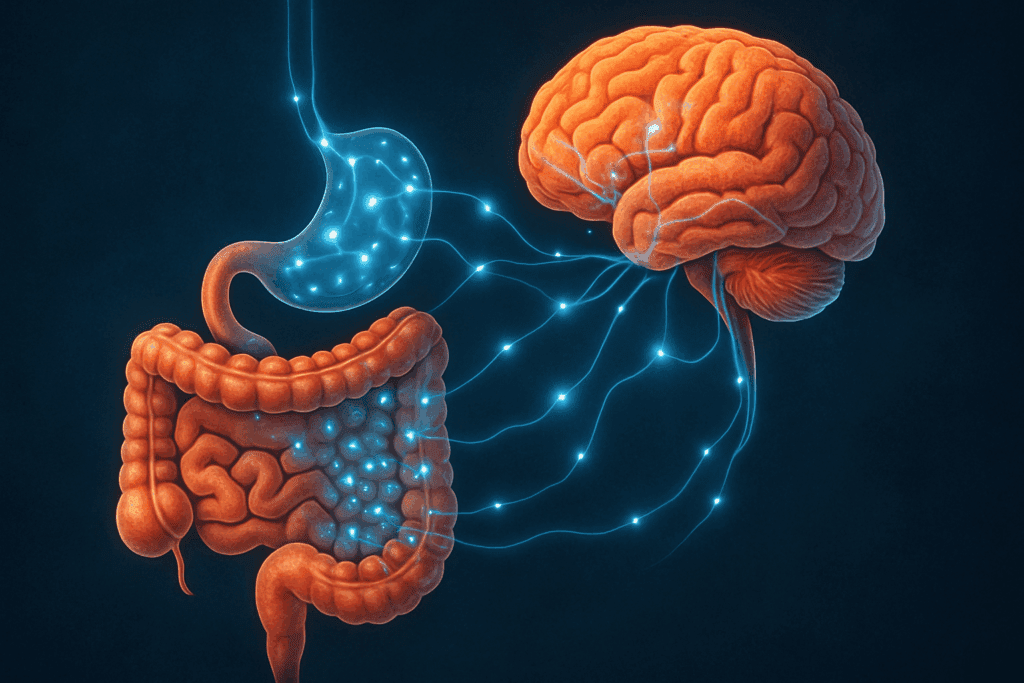Redefining Fullness in a Nutritional Context
In a culture where food is often equated with comfort, celebration, and habit, the idea of feeling full without eating may sound contradictory. Yet, as science expands our understanding of satiety, it becomes clear that hunger and fullness are influenced by far more than just caloric intake. Hormonal fluctuations, gut health, hydration levels, and even psychological triggers play powerful roles in determining whether we feel satisfied. Exploring how to feel full without eating requires a shift in perspective—from equating fullness strictly with physical volume in the stomach to recognizing the nuanced signals our bodies send when their needs are met.
This isn’t about promoting starvation or crash diets. Rather, it’s about equipping ourselves with practical tools for managing appetite in a mindful, balanced way. There are moments when delaying a meal, reducing portion sizes, or abstaining temporarily for fasting or health-related reasons becomes part of our routine. In these cases, understanding how to feel full without eating can support both physical health and mental resilience. The goal is not to suppress hunger unnaturally, but to work with the body to create sustainable habits that regulate appetite intelligently.
You may also like: How Mindful Eating Habits Can Help You Make Healthier Food Choices: Expert Tips for Conscious Nutrition and a Balanced Lifestyle

Hydration: The Overlooked Secret to Satiety
One of the simplest and most overlooked answers to how to feel full without eating lies in hydration. Our bodies often confuse thirst for hunger, prompting unnecessary snacking or even full meals when all that’s really needed is water. Drinking a glass of water before meals can help create a feeling of fullness, reducing overall food intake without compromising satisfaction. Water takes up space in the stomach, which activates stretch receptors that send signals of fullness to the brain.
Beyond plain water, warm beverages like herbal teas or lemon water can also provide a soothing sense of satisfaction. These options are calorie-free, support digestion, and help regulate appetite by promoting gut motility. Warm liquids in particular can have a comforting, grounding effect that mimics the emotional satisfaction often derived from food. If you’re asking how can I feel full without eating, starting with a hydration strategy is a foundational step.
Studies show that individuals who maintain consistent hydration throughout the day tend to have lower overall caloric intake, as they are less likely to misinterpret thirst as hunger. Moreover, fluids contribute to healthy metabolic function, which influences how we perceive and respond to hunger cues. For those looking to train their body to go without eating for intermittent fasting or mindful restriction, hydration serves as a critical cornerstone.

Fiber and the Fullness Factor Without the Calories
When considering how to feel full without eating more food, fiber plays an interesting role—particularly soluble fiber. While fiber technically counts as a nutrient, it contributes virtually no calories and can offer a powerful sense of fullness. Found in vegetables, chia seeds, psyllium husk, and certain fruits like apples or citrus, soluble fiber forms a gel-like substance in the stomach that slows digestion and promotes satiety.
Even when used in small doses—such as a teaspoon of flaxseed stirred into water—fiber can expand in the digestive tract, triggering the release of hormones like GLP-1 and PYY, which signal satiety to the brain. This makes fiber a strategic tool for individuals seeking strategies on how to feel full without eating large amounts. Importantly, fiber also supports healthy gut bacteria, which in turn helps regulate the appetite through a complex interplay of microbial metabolites and neurotransmitters.
For people asking how do you train your body to go without eating, incorporating non-caloric or minimally caloric sources of fiber into a daily routine can provide the mechanical sensation of fullness while supporting long-term digestive health. It’s an approach that meets both immediate and long-range wellness goals, reinforcing the mind-body connection inherent in mindful eating.

The Role of Mindfulness and Mental Satiety
While physical satiety has traditionally dominated nutritional advice, mental and emotional satisfaction play an equally important role. Eating is deeply intertwined with sensory experiences, memories, and mood. Simply thinking about food can trigger ghrelin—the “hunger hormone”—regardless of actual energy needs. Practicing mindfulness can interrupt this cycle by helping individuals recognize emotional hunger versus true physiological hunger.
Mindfulness-based eating approaches encourage individuals to pause and check in with themselves before reaching for food. Asking reflective questions such as, “Am I physically hungry, or emotionally uncomfortable?” or “What am I really craving right now?” can reframe the desire to eat as an opportunity for introspection. For those wondering how can I feel full without eating, cultivating mindful awareness can shift the focus from external cues to internal regulation.
Visualization exercises, such as imagining a satisfying meal or the feeling of being nourished, have also shown promise in calming hunger-related anxiety. Breathing deeply, chewing gum, or even engaging the senses with non-edible stimuli like scented candles or essential oils can mimic elements of the eating experience and help retrain the brain to associate satisfaction with more than just food.

Physical Activity and Hormonal Appetite Regulation
While it may seem paradoxical, light to moderate physical activity can reduce appetite in the short term. Movement stimulates the release of endorphins and suppresses levels of ghrelin, while increasing satiety-related hormones like peptide YY and GLP-1. These hormonal shifts can create a natural sense of fullness and well-being, making it easier to delay eating or reduce portion sizes.
This is especially relevant when exploring how do you train your body to go without eating. By pairing fasting or intentional food delay with gentle movement—such as walking, stretching, or yoga—the body begins to associate hunger with calm and control rather than urgency or discomfort. This conditioning process not only supports physical health but also reinforces positive behavioral patterns.
Additionally, exercise can shift focus away from food by engaging attention and enhancing mood. Many people eat out of boredom or emotional fatigue; physical activity provides an alternative outlet for managing those same emotions. Over time, this substitution becomes habitual, empowering individuals to regulate appetite through holistic methods rather than reactive snacking.

Harnessing the Power of Sleep for Appetite Control
Sleep is one of the most underestimated elements in appetite regulation. A single night of poor sleep can disrupt the balance of hunger-related hormones, increasing ghrelin (which stimulates appetite) and decreasing leptin (which signals satiety). Over time, this imbalance can lead to increased cravings, particularly for calorie-dense, sugary foods. Addressing sleep hygiene is therefore critical when asking how to feel full without eating.
Research consistently links adequate sleep with improved regulation of the hypothalamic centers that govern hunger and fullness. For individuals trying to extend fasting windows or reduce snacking, prioritizing quality rest can be just as important as choosing healthy foods. A well-rested brain is more capable of discerning between true hunger and psychological cravings.
Moreover, sleep supports the body’s natural circadian rhythms, which are intricately tied to metabolism and digestive function. Eating in alignment with the body’s internal clock—such as stopping food intake after sunset or avoiding late-night snacking—can improve metabolic outcomes and reduce the likelihood of perceived hunger outside of natural meal times.
Intermittent Fasting and Body Reconditioning
Intermittent fasting is one of the most researched strategies for reconditioning the body’s response to hunger. While it may not be suitable for everyone, particularly those with medical conditions or a history of disordered eating, it has shown promise in supporting metabolic health and appetite regulation. At its core, intermittent fasting is not about deprivation but about recalibrating the body’s feeding schedule.
For those wondering how do you train your body to go without eating, time-restricted eating windows can gradually build tolerance for longer periods without food. The key lies in slow adaptation. Starting with a 12-hour fasting window and gradually extending it can help reduce the discomfort and anxiety often associated with hunger. During these fasting windows, non-caloric strategies such as hydration, herbal teas, and mindful breathing can help manage sensations of emptiness.
Intermittent fasting also encourages reliance on fat stores for energy, reducing dependency on constant food intake for fuel. As the body adjusts to this rhythm, many people report decreased appetite, improved clarity, and a more stable emotional response to hunger. This aligns well with mindful nutrition goals and provides a structured path for exploring how to feel full without eating during fasting periods.
The Psychology of Ritual and Habit Disruption
Much of our eating behavior is dictated by habit rather than need. Breakfast at 8, a snack at 3, dessert after dinner—these patterns are deeply ingrained. But just as habits are formed, they can be unformed and reshaped. Disrupting automatic food rituals is a powerful way to train the body to go without eating in certain contexts, replacing mindless consumption with purposeful action.
One effective technique involves replacing eating cues with non-food rituals. For instance, if you’re accustomed to snacking while watching TV, substituting that moment with a hot beverage, journaling session, or even a short walk can retrain the brain to associate comfort with activities other than eating. Over time, the compulsion to reach for food in these moments diminishes, allowing natural hunger to become the guiding force again.
This retraining process requires consistency and patience. At first, the absence of a habitual food routine may feel unsettling. But with practice, the brain adapts, and new pathways of satisfaction are created. This neuroplasticity is at the heart of mindful eating and underpins the process behind learning how to feel full without eating out of routine or emotion.

Gut Health, Microbiome Influence, and Appetite Signals
Emerging research in nutritional science reveals a fascinating connection between gut health and appetite control. The gut microbiome—comprised of trillions of bacteria—communicates directly with the brain through the gut-brain axis, influencing mood, satiety, and food preferences. A well-balanced microbiome is associated with improved sensitivity to leptin and other satiety hormones, meaning your body is more likely to recognize when it’s truly full.
Prebiotics, probiotics, and fermented foods like kimchi, sauerkraut, and miso can nourish beneficial bacteria and contribute to more stable hunger patterns. If you’ve ever wondered how I can feel full without eating, supporting gut health is a strategic, long-term solution that works from the inside out.
Additionally, gut bacteria influence the production of neurotransmitters like serotonin and dopamine, which affect mood and cravings. By fostering a healthier microbiome, you can reduce emotional eating, cravings for sugar or processed foods, and create a more balanced internal environment where hunger cues are reliable and aligned with the body’s actual needs.
Frequently Asked Questions: How to Feel Full Without Eating
1. Can smell or visual cues alone help you feel full without eating?
Yes, sensory cues like smell and visual presentation can contribute to a perceived sense of fullness, even without consuming food. The brain responds to food-related stimuli with anticipatory satisfaction, which can temporarily reduce cravings or the urgency to eat. For example, the aroma of a warm dish or watching a cooking video may satisfy the psychological aspect of hunger. This technique can be especially helpful for individuals exploring how to feel full without eating during fasting windows or structured meal schedules. While it’s not a replacement for nutrients, using sensory stimulation can ease the discomfort of hunger in mindful, short-term scenarios.
2. How can breathwork or meditation influence appetite regulation without food?
Deep breathing techniques and meditation influence hunger hormones such as ghrelin and cortisol by calming the sympathetic nervous system. Stress often triggers cravings that feel like hunger, even when the body has enough fuel. By practicing calming breathwork, individuals can redirect their focus inward and assess whether the sensation is true hunger or emotional restlessness. Meditation also improves interoceptive awareness—our ability to perceive internal bodily signals—which enhances the practice of mindful eating. This strategy is especially useful for people asking how do you train your body to go without eating while still honoring its signals in a balanced way.
3. Is chewing without swallowing a viable strategy to feel satisfied without consuming calories?
While it may sound unusual, some behavioral therapists use gum or sugar-free mints as oral substitutes to activate chewing reflexes without triggering digestive processes. This can momentarily trick the brain into thinking a meal has occurred, particularly for individuals managing appetite during structured fasting or calorie restriction. The chewing motion, even in the absence of food, sends signals to the brain that eating has taken place, often reducing hunger pangs. It’s a controlled way to address oral fixation while still exploring how to feel full without eating. Just be cautious with overuse, as excessive chewing without food can strain the jaw or stomach over time.
4. Can structured meal imagery support appetite control in clinical settings?
Yes, guided imagery involving detailed visualization of satisfying meals is used in therapeutic settings to reduce compulsive eating behaviors. Mental rehearsal of eating—imagining texture, flavor, and fullness—has been shown to trigger mild satiety responses in the brain. This method is especially relevant for individuals undergoing refeeding protocols or exposure therapy in eating disorder treatment, but it also has applications for the general population. If you’re wondering how can I feel full without eating during emotional stress, using visualization exercises as a calming tool may offer a surprising benefit. It’s a way to engage the mind’s powerful connection to satiety through imagination rather than physical food intake.
5. What role does social interaction play in appetite suppression without food?
Engaging in meaningful conversation or social activity has been observed to reduce appetite in certain settings. Social engagement redirects cognitive focus and can reduce the intensity of hunger sensations, especially when the urge to eat is driven by boredom or loneliness rather than true nutritional need. For individuals learning how to feel full without eating in between meals, spending time with others—whether virtually or in person—can offer a healthy distraction and emotional nourishment. This phenomenon highlights that food often fills emotional as well as physical voids. Addressing those social needs directly may lessen the reliance on food as a coping mechanism.
6. How does scent therapy contribute to feelings of satiety?
Aromatherapy, especially with scents like peppermint, grapefruit, or vanilla, has been shown to reduce food cravings and appetite in some small-scale studies. Peppermint, in particular, appears to modulate the brain’s perception of hunger by stimulating alertness and reducing the desire to snack. This technique is especially helpful for people who frequently ask how can I feel full without eating during work or study sessions when access to food is limited or intentional. Keeping essential oils or scented candles nearby can support a calming, sensory-based strategy for appetite control. Though not a substitute for nourishment, scent therapy offers a useful tool in the behavioral toolbox.
7. Can posture and body positioning impact perceived fullness?
Yes, surprisingly, body posture can influence how we interpret fullness cues. Sitting upright after a meal or even during fasting can enhance vagus nerve signaling—one of the primary neural pathways involved in digestion and satiety. Slouching or compressing the abdomen may inhibit these signals, potentially increasing discomfort or cravings. For individuals practicing intermittent fasting or calorie reduction, maintaining a tall spine and open chest posture may support better appetite regulation. It’s a subtle technique that can reinforce how do you train your body to go without eating more efficiently, especially when paired with mindful breathing.
8. Are there psychological techniques to reduce hunger anticipation during fasting?
Cognitive-behavioral tools such as “urge surfing” allow individuals to mentally observe a craving like a wave—it builds, peaks, and eventually passes without the need for action. This practice helps reduce the urgency of anticipated hunger, which is often more psychological than physiological. Recognizing the transient nature of cravings can be empowering, especially for people learning how to feel full without eating while adjusting to new eating patterns. Labeling the urge and observing it non-judgmentally can reframe hunger as manageable rather than threatening. Over time, this practice builds emotional resilience and confidence in one’s ability to navigate fasting windows.
9. What is the long-term impact of consistently delaying meals for fullness training?
Gradually extending time between meals—while ensuring adequate nutrient intake overall—can recalibrate hunger hormones and improve metabolic flexibility. This means the body becomes better at switching between fuel sources, such as using stored fat during fasting periods. It’s a metabolic adaptation that supports sustained energy and reduces reliance on frequent eating. For those committed to discovering how do you train your body to go without eating in a safe, measured way, consistency over weeks or months is key. However, it’s essential to monitor for signs of nutrient deficiency or low energy, especially for individuals with high physical demands or underlying health conditions.
10. Can supportive routines help reinforce satiety without food consumption?
Absolutely. Creating structured daily routines around sleep, movement, hydration, and mental stimulation can reduce erratic hunger signals. When the body knows what to expect, it’s less likely to produce false hunger cues triggered by stress, poor sleep, or inconsistent eating. Establishing rituals—such as a warm beverage every afternoon or an evening walk—can create placeholders that feel satisfying without involving calories. This type of predictability is often at the heart of how to feel full without eating in the long term. It’s about building systems that support wellness so that food becomes just one of many ways we nourish ourselves.
Conclusion: Embracing Mindful Strategies to Feel Full Without Eating
Mastering how to feel full without eating is not about denying the body’s needs but understanding and aligning with them more deeply. Whether you are exploring intermittent fasting, reducing emotional eating, or simply seeking more balanced eating habits, the path forward involves hydration, fiber-rich nutrients, mindfulness, movement, sleep, and a strong connection to gut health. Each of these strategies supports a more intuitive approach to nourishment—one where fullness is defined not just by what fills the stomach, but by what sustains the mind and body holistically.
When asked how do you train your body to go without eating, the answer lies in gradual, evidence-based lifestyle adjustments that reframe hunger from an enemy into a guide. When applied mindfully, these methods reduce unnecessary intake without sacrificing satisfaction or well-being. And if you’ve ever questioned how can I feel full without eating, know that the solution doesn’t rest in willpower alone—but in a comprehensive approach that addresses the physical, emotional, and psychological roots of appetite.
Ultimately, fullness is not a number on a scale or a calorie count—it’s a relationship. By shifting our perception of hunger and learning to meet our bodies with curiosity rather than control, we pave the way for a healthier, more empowered lifestyle. The journey may not always be easy, but with the right strategies, support, and self-awareness, feeling full without eating becomes not only possible—it becomes deeply rewarding.
Was this article helpful? Don’t let it stop with you. Share it right now with someone who needs to see it—whether it’s a friend, a colleague, or your whole network. And if staying ahead on this topic matters to you, subscribe to this publication for the most up-to-date information. You’ll get the latest insights delivered straight to you—no searching, no missing out.
appetite suppression tips, mindful eating habits, non-food satiety strategies, tricks to curb hunger, appetite control techniques, managing cravings naturally, fullness without overeating, mindful nutrition practices, gut-brain connection, emotional hunger control, hydration and satiety, fasting adaptation tips, healthy eating behavior, psychological hunger management, satiety without snacking, hunger hormone regulation, stress and appetite, behavioral nutrition insights, natural appetite regulation, non-diet weight management
Further Reading:
Mindful Eating 101 — A Beginner’s Guide
13 Science-Backed Tips to Stop Mindless Eating
Disclaimer
The information contained in this article is provided for general informational purposes only and is not intended to serve as medical, legal, or professional advice. While NewsHealthWatch strives to present accurate, up-to-date, and reliable content, no warranty or guarantee, expressed or implied, is made regarding the completeness, accuracy, or adequacy of the information provided. Readers are strongly advised to seek the guidance of a qualified healthcare provider or other relevant professionals before acting on any information contained in this article. NewsHealthWatch, its authors, editors, and contributors expressly disclaim any liability for any damages, losses, or consequences arising directly or indirectly from the use, interpretation, or reliance on any information presented herein. The views and opinions expressed in this article are those of the author(s) and do not necessarily reflect the official policies or positions of NewsHealthWatch.

